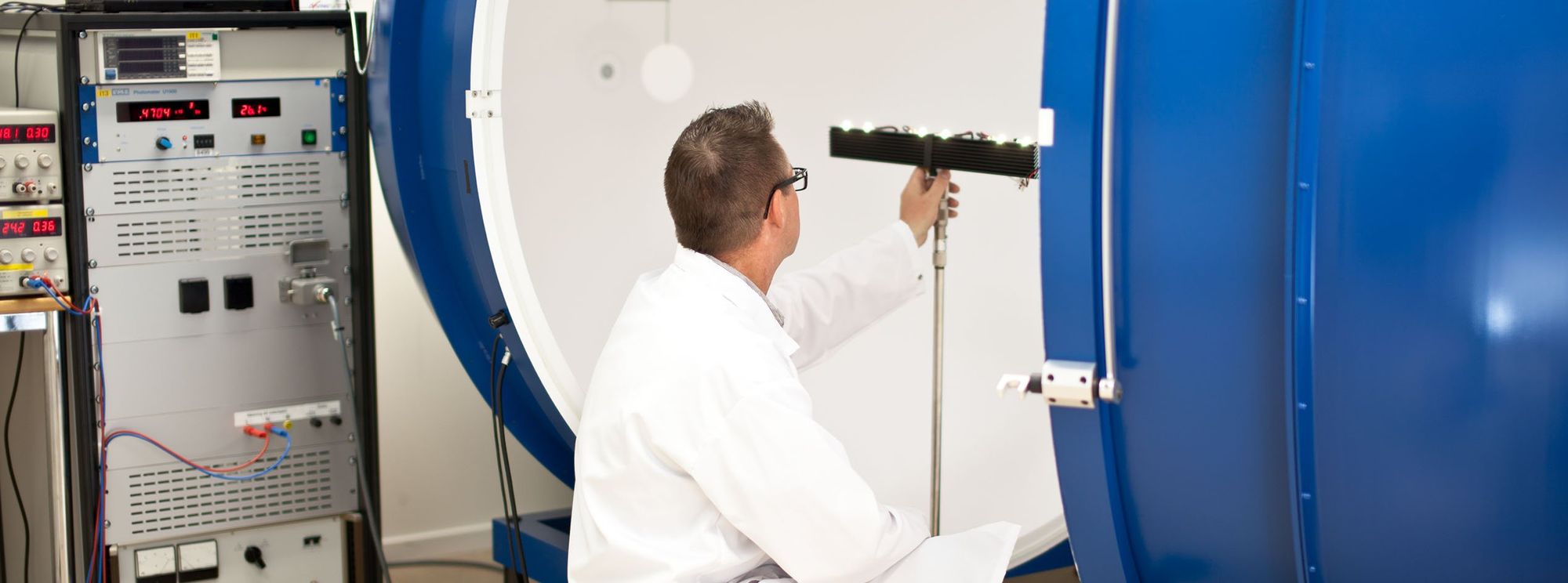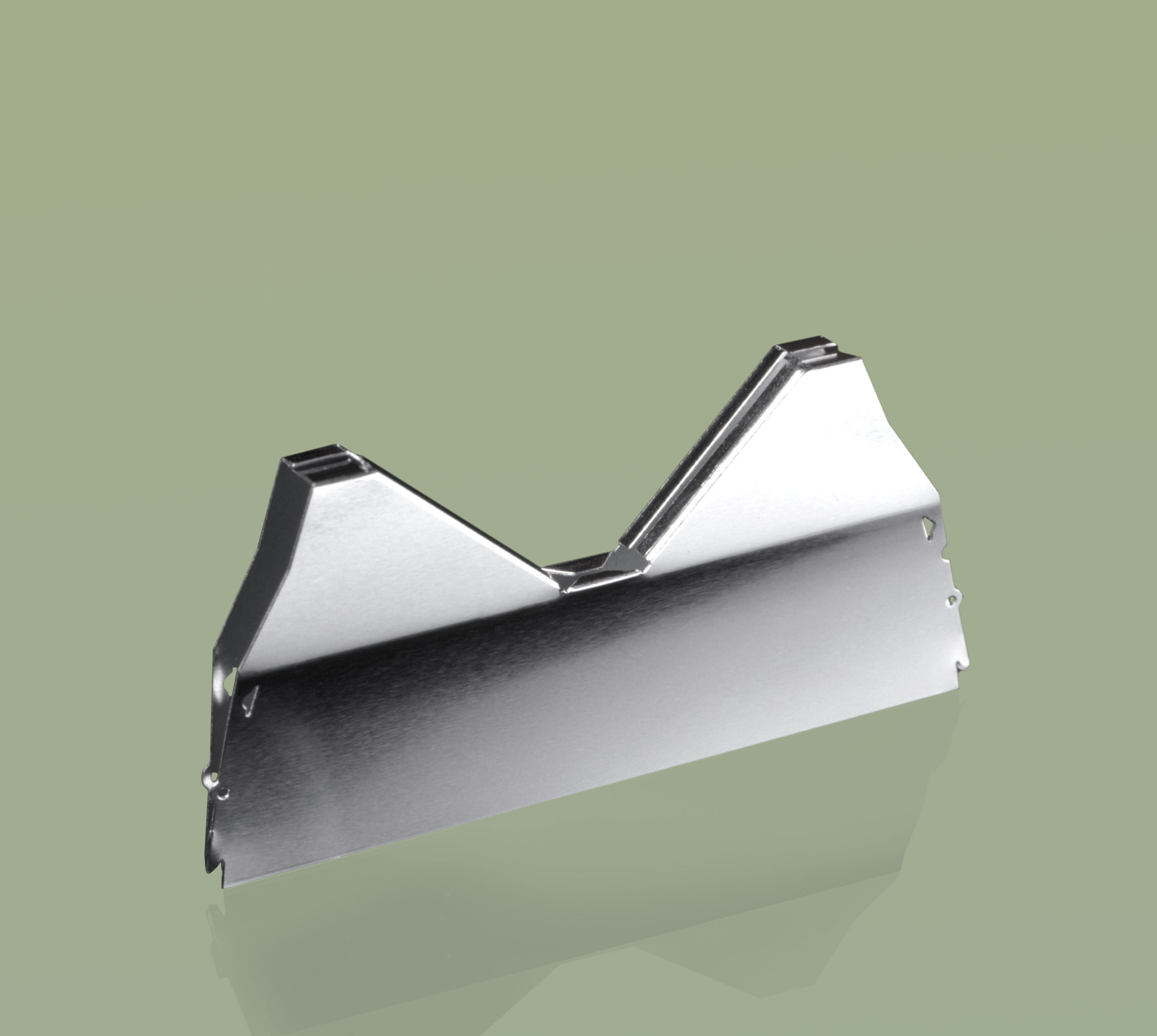
Innovations for better light
Over the last 70 years within the lighting industry various new findings have come our way and we have embraced the change. When we started 1945 there was the light bulb but as the years have passed, new light sources and technologies have emerged, like the LED revolution of last couple of years.
For each new development we have increased our understanding of light, providing the stimulus for new solutions which deliver good, energy efficient, lighting for humans. A lot of the new findings have forced us to learn and re-think what we knew during the years.
Compact fluorescent lamp
In mid-eighties there was a new light source on the market, the compact fluorescent lamp. Suddenly we were able to make energy efficient lighting with smaller dimensions such as downlights and wall luminaires. It was an intensive light source and there was a lot of light that had to be taken care of. This little light source could have a luminance (light intensity) up to 40.000 cd/m2! Basically we had the energy efficiency of a fluorescent tube in a miniature size. The new light source suddenly became an alternative to the traditional bulb in a lot of applications and led to a whole new range of stylish fittings.
Reflector technology
In the very first Pleiad downlighter that was released in mid-nineties we developed a symmetrical light distribution from a horizontally positioned lamp. Why horizontally? We simply wanted to keep the recess depth as low as possible since there often is a lack of space above the suspended ceiling. With a lot of engineering skills we designed a reflector with symmetrical light distribution with excellent cut-off from the horizontally positioned lamp! When others made cut-outs in the reflector for lamp switch we made a toggle solution for that in order to get the most light out of the Pleiad.
Electronic ballasts
In the early nineties we also got the electronic, high frequency ballasts resulting in increased energy efficiency and a flicker-free light! At Fagerhult our big issue was controlling the heat on the ballast since heat kills electronic devices. After some years we introduced our own policy regarding thermal control and stated that we should always have at least a 5 °C margin to the stated TC-point on electronics.

The t5 led to r5-louvre
Another good example of innovation is when the T5 fluorescent lamp entered the market in the mid-nineties, making many of the norms of T8 luminaires irrelevant. One aspect was that the T5 tube performed at the best at an ambient temperature of 35 °C instead of T8’s 25 °C. Next thing was to decide what we should do with all light and how we should control it? The luminance in cd/m2 values rose about 50 per cent and compared to the T8 there where issues with glare from the new, highly intense light source.
The answer was to design totally new double parabolic louvres that were not only glare-free but also provided higher efficiency to the luminaire. The solution consisted of side and cross reflectors where the cross blades were designed with a sealed top that reflected the light back into the side and top reflectors which minimised the light losses. The curved tops of the cross blades eliminated unwanted reflections on the side reflectors and gave a good mechanical cut off in all directions.
To maximise the light output out of the luminaire we also made the cross blades thinner and that itself made the light opening’s area approximately 4 percent larger, resulting in higher efficiency.
LED
LED revolutionised the lighting landscape; high light flows ensured superb efficiency and economy, with a lifespan of tens of thousands of hours.
From what was previously the domain of decorative accent lighting, LED technology evolved into a practical, general lighting option. To truly embrace the benefits of LED, and to address the demands it posed in issues of glare and heat management, required completely new solutions, rather than just changing the light source. The great challenge with LEDs is to keep glare within reasonable levels. It is not unusual that diodes and LED modules have a luminance (light intensity) of over 300.000 cd/m². In contrast, a standard T5 fluorescent tube has a luminance of 17.000 cd/m².
Again, we started from scratch, developing new luminaires specifically for LED, creating viable solutions across the whole spectrum of a lighting project.
LED’s greatest advantage is also its greatest challenge. Balancing efficiency with ergonomics. Combining good economy and lighting comfort. With our experience, lighting know-how and innovation we did just that.
TEKST KLAS ANDERSSON
FOTO FAGERHULT
Gerelateerd nieuws

Innovatie in elke vouw - Wrapped blinkt uit in engineering
Omdat duurzaamheid niet langer een keuze is maar een noodzaak, moet innovatie beginnen met de vraag: Wat als we het eens anders deden? Voor het R&D-team van Fagerhult werd die vraag de vonk achter Wrapped, 's werelds eerste pendelarmatuur gemaakt van karton. Traditioneel worden pendelarmaturen gemaakt met metalen frames, wat een duurzame, vertrouwde en veilige methode is. Maar het team achter Wrapped wilde ontdekken of ze een andere pad konden betreden. Ze besloten om met elkaar uit te zoeken of ze een armatuur konden maken dat niet alleen op topniveau presteerde, maar ook een minimale impact had op het milieu. Na grondige overwegingen speelt massief karton, een hernieuwbaar en gerecycled kartonmateriaal dat voorheen alleen werd gebruikt in verborgen onderdelen, nu de hoofdrol. Wrapped is meer dan een armatuur, het is een verkenning van vooruitstrevendheid en creativiteit. Zonder kant-en-klare oplossingen om zich op te baseren, moest het ontwerpteam vanaf nul beginnen. Elk element, van de constructie tot de montage, werd onder de loep genomen en het resultaat is een armatuur dat zowel technisch solide als milieubewust is. Gallery: Wrapped details De armatuurbehuizing is gemaakt van 65% gerecycled karton en kan ineen worden gevouwen door zeer nauwkeurige uitsparingen die perfect in elkaar passen. Engineering elegantie De behuizing van Wrapped bestaat uit twee belangrijke delen: de binnen- en de buitenbehuizing, beide ontworpen om in harmonie samen te werken voor kracht en stabiliteit. De buitenkant wordt bij elkaar gehouden door een rib van 100% gerecycled post-consumer aluminium, die de vouwen op hun plaats houdt en zorgt dat de vorm behouden blijft. De eindkappen zijn gemaakt van 100% gerecycled gebruikt plastic en klikken vast in nauwkeurige uitsparingen, waardoor de structuur wordt vastgezet zonder dat er schroeven nodig zijn. De aansluitdoos wordt op zijn plaats geklikt en de driver wordt aangebracht met kleine klemmetjes, gemaakt van gerecycled post-consumer plastic. De LED-printplaat is op de lens gemonteerd en wordt beschermd door een afdekking van massief karton en de complete verlichtingsmodule wordt op zijn plaats vergrendeld met een afscherming. Het resultaat is een naadloze, schroefvrije constructie die een doordacht ontwerp belichaamt. Design met een doel Fredrik Beckius, Design Engineer bij R&D, kijkt terug op de reis:"De uitdaging was het werken met een materiaal dat we nog nooit eerder voor een pendelarmatuur hadden gebruikt. We konden de onderdelen niet op de gebruikelijke manier monteren, dus moesten we op zoek naar alternatieve oplossingen."Martin Gustafsson, ook een Design Engineer, voegt hieraan toe:"We moesten een manier vinden om de armatuur kostenefficiënt te produceren, zowel voor ons als voor onze leveranciers. Elk ontwerponderdeel moest meer dan één doel dienen." Dit tweeledige denken is duidelijk zichtbaar in het hele ontwerp van Wrapped. Het gaat niet alleen om esthetiek of duurzaamheid - het gaat om technisch vernuft en om elk onderdeel te laten tellen. Citaat: Martin Gustafsson Duurzaamheid zonder compromissen Wrapped wordt gemaakt in Fagerhult, Habo, met lokaal gewonnen gerecyclede en hernieuwbare materialen. Het is een product geboren uit Zweedse innovatie, geworteld in de erfenis van eerdere duurzame ontwerpen zoals Multilume Re:Think en Kvisten. In tegenstelling tot veel milieubewuste producten is Wrapped zelfverzekerd en eenvoudigweg duurzaam. Met uiterst precieze uitsparingen, een stabiele constructie en strenge tests tijdens het hele proces voldoet Wrapped aan alle kwaliteitsnormen zonder afbreuk te doen aan zijn milieu-ethos.
Fagerhult introduceert 's werelds eerste hoogwaardige pendelarmatuur van karton
Het nieuwe Fagerhult-armatuur Wrapped is ontworpen en gemaakt in Zweden en combineert hoogwaardige verlichting, hoge efficiëntie en een laag gewicht met het feit dat het het meest klimaatvriendelijke, hoogwaardige armatuur van het bedrijf tot nu toe is. De armatuurbehuizing van Wrapped is gemaakt van biologisch, gerecycled karton, Solid Board, dat per kilogram 89% minder impact heeft op het klimaat dan aluminium. De weinige details die wel van plastic en metaal zijn, zijn bovendien gemaakt van gerecycled post-consumer materiaal. Het resultaat is een pendelarmatuur met een minimale totale impact op het milieu, zonder afbreuk te doen aan lichtkwaliteit of design. “Door te kiezen voor massief karton, rekken we het idee op dat een pendelarmatuur van aluminium gemaakt moet zijn. We vroegen ons gewoon af: Kunnen we een ander hernieuwbaar en gerecycled materiaal gebruiken dat al deel uitmaakt van een gevestigde circulaire infrastructuur?” zegt Christer Liljegren, productmanager bij Fagerhult. Betaalbare duurzaamheid Wrapped combineert eersteklas verlichtingsprestaties met een gunstig prijspunt en maakt duurzame verlichtingsoplossingen beschikbaar voor een breder publiek. De keuze voor lichter materiaal maakte ook een totaalgewicht van 1,6 kilogram mogelijk (hangend, 900 mm). “Ik denk dat de installateurs net zo veel waardering voor Wrapped zullen hebben als wij. Hij is echt verrassend licht en makkelijk te hanteren,” zegt Christer Liljegren. De lancering omvat ook Wrapped Pendant 900 mm. De geringe hoeveelheid materiaal maakt het tot een echt duurzame keuze, omdat het in veel toepassingen net zo goed presteert als een algemeen 1200 mm armatuur. Het is verkrijgbaar met de Beta Opti afscherming, heeft een 50/50 directe en indirecte lichtverdeling en de visuele ergonomie blijft uitstekend. De productfamilie wordt in 2026 uitgebreid met extra uitvoeringen. De voortzetting van een erfenis van duurzame innovatie Wrapped bouwt voort op Fagerhults innovatieve werk met duurzame materialen, na de Multilume Re:Think (die ook is gemaakt van massief karton) en het houten armatuur Kvisten. “Wrapped belichaamt ons idee van licht voor een betere toekomst; het combineren van eersteklas verlichting met duurzaamheid op een toegankelijk niveau,” zegt Paula Backman, Product en Marketing Directeur bij Fagerhult.